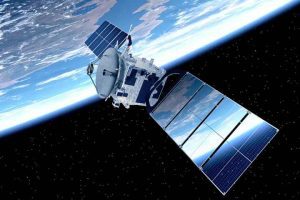Introduction to the Starlink Satellite Platform
The Starlink satellite platform is an ambitious project launched by SpaceX to provide high-speed, low-latency internet services to every corner of the world, especially to regions with limited or no internet access. By deploying a constellation of thousands of small satellites in low Earth orbit (LEO), Starlink aims to offer reliable broadband services even in the most remote and underserved areas.

How Does the Starlink Satellite Platform Work?
Starlink relies on a network of LEO satellites, which orbit Earth at much lower altitudes than traditional geostationary satellites. These low orbits allow Starlink satellites to provide faster internet speeds and reduced latency. The system connects users with high-speed internet via a simple user terminal, which communicates with the Starlink satellites overhead. As the satellites move across the sky, they hand off signals to nearby satellites, ensuring continuous and uninterrupted coverage.
Key Features of the Starlink Satellite Platform
1. Global Coverage
Starlink’s network is designed to provide internet access globally, with a focus on remote and rural areas that traditional internet providers cannot reach. With thousands of satellites in orbit, the system is expected to offer robust connectivity across the globe, including in regions where terrestrial broadband infrastructure is limited or unavailable.
2. Low Latency and High-Speed Connectivity
One of the standout advantages of the Starlink satellite platform is its ability to offer low-latency internet, typically under 30ms, which is ideal for real-time applications such as online gaming, video conferencing, and streaming. This is a significant improvement over traditional satellite internet services, which often suffer from high latency due to the greater distance traveled by signals to geostationary satellites.
3. Scalable Infrastructure
As the demand for satellite internet grows, Starlink has the ability to expand its network by launching more satellites into orbit. This scalability ensures that the platform can accommodate more users and provide faster speeds as the network matures.
Benefits of the Starlink Satellite Platform
1. Affordable Internet in Remote Areas
Starlink offers an affordable solution for internet access in rural and underserved regions. By bypassing the need for expensive terrestrial infrastructure, Starlink can provide high-speed internet to locations where traditional broadband providers may not consider it cost-effective to build out infrastructure. This helps bridge the digital divide and connects millions of people to the global internet.
2. Reliable Service in Challenging Environments
Traditional satellite services are often affected by weather conditions and environmental factors, leading to interruptions in service. However, the Starlink satellite platform is designed to minimize these disruptions. Its LEO constellation provides a more reliable connection, ensuring users experience fewer service interruptions compared to traditional satellite networks.
3. Faster Deployment
Since Starlink does not rely on physical infrastructure like fiber-optic cables, the platform can quickly deploy internet services to remote areas. This makes it a valuable tool in disaster relief scenarios, where rapid deployment of communication services is crucial for emergency response.
Applications of the Starlink Satellite Platform
1. Global Internet Access
Starlink is primarily focused on providing global internet coverage. This is especially beneficial in rural areas, developing countries, and regions affected by natural disasters, where access to reliable internet has been a challenge.
2. Improving Connectivity for Businesses and Education
Businesses and educational institutions in remote locations can also benefit from the high-speed internet offered by Starlink. By improving connectivity, businesses can communicate more effectively, and students can access online learning resources, regardless of their location.
3. Remote Operations and IoT
The Starlink satellite platform also benefits industries that rely on remote operations, such as oil and gas, mining, and agriculture. With a reliable satellite internet connection, remote operations can operate more efficiently and safely, and IoT devices can transmit critical data in real-time.
Challenges Facing the Starlink Satellite Platform
1. Regulatory Hurdles
As Starlink expands its network globally, it must navigate various regulatory requirements in different countries. These regulations may include licensing, frequency allocation, and coordination with other satellite operators to prevent interference.
2. Space Debris Concerns
With thousands of satellites being launched into space, there are growing concerns about space debris and the long-term sustainability of large satellite constellations. SpaceX has implemented measures to mitigate these risks, but ongoing efforts are needed to ensure the responsible use of space.
The Future of the Starlink Satellite Platform
As Starlink continues to grow, its impact on global internet connectivity will only increase. With more satellites being launched each year and advancements in technology, Starlink is poised to revolutionize how people access the internet worldwide. Whether it’s providing broadband to remote villages or enabling reliable communication in disaster-stricken areas, Starlink’s potential is vast.
Learn More About Satellite Platforms and Their Impact
To discover more about the advancements in satellite technologies and how they are reshaping global connectivity, click here for more details.
